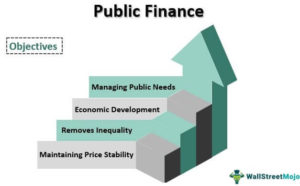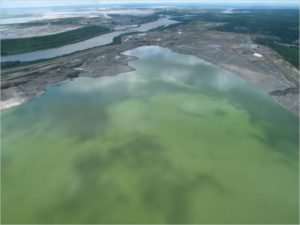There are major issues confronting Alberta- a massive understatement if there ever was!
As a student, practitioner, and teacher of public policy for over 40 years, the following ideas are in a germination phase and readers are encouraged to comment and add their suggestions on the central germ of this idea.
A solutions-based approach to government policy-making offers a means of identifying a small number of “problems” which require immediate attention and on which there is a consensus on the need for action. This approach starts with
- Problem identification. The government’s prerogative, but our current government arguably sees things much differently than a majority of Albertans- (e.g. the visceral hate of the federal government as represented by Mr. Trudeau.) In this blogpost, I set out what I believe the 5 government priorities ought to be and explain an approach to focus politicians’ and the community’s resources to “solving the problem.”
In my judgment the problems below are both immediate and longer term. Readers may believe that longer-term problems can be put off. I would argue that some longer-term problems are of a certain character that putting them off will only make matters worse.

Firstly, governments cannot escape the fact that our climate is changing and faster than originally thought. Alberta has endured its fair share of floods and wildfire disasters. Approaches to climate heating differ but there is no doubt that for humans to survive, as an industrial society, we must get off our collective addiction to burning fossil fuels. This fact is almost universally seen by Albertans as negative for their welfare.
There are many end users of Alberta’s exports of fossil fuels and those jurisdictions must do their part in weaning their populations off its fossil fuel addiction by reducing demand for fossil fuel products. In other Canadian jurisdictions, the primary carbon reduction challenges are improving the housing stock and designing policies to change the mix of transportation energy sources. These changes will happen and no fearmongering will change the fact that oil production is peaking and will eventually decline. Declining demand will undermine the Big Four’s drive for more bitumen production. These producers are claiming, like their political friends, there is an energy crisis. The fact that prices for oil are higher is a good thing for the province as resource owner but from an environmental standpoint higher prices sow the seeds of lower consumer demand.

A second challenge relates to Alberta’s health system where there is almost universal consensus that the system needs “fixing.” Canadians, and Albertans by extension, also realize there are many serious problems with the system (e.g., emergency waits, surgical waits, few rural doctors, limited access to family GP, etc.). Albertans and Canadians however are seriously divided, along ideological lines mostly, on the question of delivering medically necessary treatments through public funding or private funding.
A third challenge is Alberta’s fiscal management. Most Albertans over the age of 45 remember the Klein cuts and the implicit promise that fiscal policy would be managed in an intelligent, sustainable manner to prevent a recurrence. This did not happen: the past four years have been particularly difficult for workers in the health care sector, where the mishandling of the COVID response and poor government- labour relationships, created a deep well of mistrust.
There is no consensus within political parties let alone the population about how to build fiscal sustainability. The Klein government and succeeding governments pledged to keep taxes low- the Alberta Advantage- aided by decision rules abandoned before the NDP inherited a very cloudy economic and financial situation.

While there is no political or public consensus, there is consensus among academics that a sales tax, initially imposed at a relatively low level, will help stabilize the province’s finances making the government somewhat less hostage to world oil prices. The Hirsch paper is recommended reading to get up to speed on the key issues. (Hirsch does not address the revenue question directly other than emphasis the volatility of resource revenue.).+9
A fourth issue is growing economic inequality. As the oil industry continues to consolidate and streamline its operations, the number employed in the industry are fewer than in 2014. Income inequality is the product of many factors including the income tax system, the quality of social supports, COVID-19’s impact on society especially those in lower income groups and students, education policies, justice policies, racism, especially against First Nations, and the opioid crisis.

Income inequality is a significant problem in a society which values opportunity, equality, and freedom. The loss of such human potential is significant due to underemployment of so many left behind. According to a Statistics Canada study of income inequality among urban areas Toronto, followed by Calgary, have the highest inequality using a Gini coefficient (where the highest inequality is 1 meaning one person gets all the income and the lowest is 0 where everyone earns the same). Edmonton has the tenth highest inequality rate but its income inequality is lower than the national average.
Alberta’s oil and gas industry has an awful track record in cleaning up the land their industrial processes have polluted and disrupted. The Alberta Energy Regulator is now widely accepted to be too “friendly” with the industry. The fifth issue is the massive liabilities in the tailings ponds north of Fort McMurray. There are two primary problems: ecological and financial. The ecological problem is will the oilsands producers honour their original commitment to restore the lands disrupted from its massive industrial operations to the original state of the land before industrial development began.

The financial question is -who will pay for the massive remediation? At the present time, there is only $1.55 billion of security held against an officially calculated $35-billion which critics believe is vastly understated by perhaps a factor of four times.
2. Implementation
Successful solutions of solutions-based policy development depend on a blend of wide consultations (e.g. with the “customer”), aligned administrative management, expertise, and a common definition of the problem to be solved Implicit in this quest is an agreement about what the measurable outcomes are. In other words – how do we know if the problem is “solved?” In the case of the race to put a “man on the moon” or building an atomic bomb, the “solution” to the problem was obvious.
However, in the case of health care the devil will be in the details. This is why there is need for wide consultations to understand the interconnections of complex systems as well as the needs of the customers. Addressing climate change will be an ongoing priority for at least 50 years and adherence to meeting specific goals to reduce GHG requires measurement that can be trusted. Given the life and death nature of this existential threat a whole range of regulatory actions will confront Alberta freedom fighters’ sensibilities and could result in conflict which politicians will have to confront.
A second component of implementation is administrative structure. It would seem to make sense that the cabinet be constructed on the bases of these priorities with a “super-minister” in charge of the priority and a cabinet subcommittee consisting of related sub-ministries. The cabinet secretariat would serve both the ministerial committee and deputy ministerial committee.
The central concept is that co-operation and teamwork is absolutely essential to solve the problem. Instead of silos, each member of cabinet and deputies would be part of a larger whole to address and solve problems in terms of clearly defined and accepted goals.
In addition, to line up the priorities of the government with legislative priorities, each priority area would have a distinct standing legislative committee to hold the super-ministers to account.
The final piece is budgeting. Do you have five (or as many as their are priorities) global budgets? How would this work for the massive education budgets? Where would input of educational leaders be more deeply felt in these priorities. Obviously the education minister(s) and their department’s expertise must figure in all solutions but in different ways. Education is a central issue for addressing income inequality but also plays important role in climate change, and health care.
[Some readers will possibly roll their eyes at the mention of the term “super-ministries” which began as an idea in the 1980s and has been used federally and provincially. Super-ministries had “budget envelopes and thus the cabinet committees became somewhat like mini-treasury boards.]
Systems work not because of some innate formula but because people make them work to be successful. Organization and alignment are necessity conditions to success but only one component.
Central to the success of a solutions-based policy development is accountability. Super-ministers should not be allowed to escape accountability by blaming his or her cabinet colleagues. It will be up to the Premier and the Legislative Assembly to hold these key ministers to account for their progress on solving the problem as defined by their government.
This structure will entail a whole rethink of cabinet structure on which there is considerable literature.
Expertise is another central success factor. The modern world has become increasingly complex as education, science, government, business and technology require highly skilled workers with highly specialized skills. Specialization and sub-specialization in all fields, whether securities law or nuclear medicine, implies key decision-makers are highly versed in specialized research but they may be incapable of drawing links between specializations, or seeing “the big picture.” These narrow perspectives are not only true for the hard sciences but also in the social sciences and humanities.
The debate between generalist “commanders” or qualified professionals leading departments is an important question especially in government. Generalist commanders may be good in some circumstances but they can make serious mistakes if they don’t understand some highly technical issues. In the corporate sector, the received wisdom of organizations like the Institute for Corporate Directors is to identify expertise along a multitude of factors (finance, human resources). However, the dozen or so areas of expertise are too still narrow. The danger with the focus on accounting, finance, law, communications, government relations and human resources is this ignores both basic science and humanities- the ability to think critically and creatively.
The structure will need various levels of expertise at all levels of policy-making. Ministers will have to rely and trust the expertise available but will have to make quick judgments on whether these experts are team players or not. Ministers will also have to make judgments about the right sort of expertise is needed and when.
3. Recommendations arising from solutions-based policy development
The first place to start is with what consultations call the “low hanging fruit” or common sense solutions that are “easy wins” to focused governments. The recommendations are grouped by priority area.
- Climate Change
- All new buildings constructed in Alberta after January 1, 2025 must have solar panels and meet new codes for insulation.
- All new buildings built after January 1, 2025 must be heated by electricity.
- Polluters will pay more whether individuals or corporations via a gradually escalating carbon tax collected by the province and meeting criteria under federal law.
- Eliminate the Canada Energy Centre – will save approximately $30-million.
- Amend the Microgeneration Regulation to allow more power to be generated than is currently consumed by the household.
- Ensure new all government and municipal buildings as well as facilities funded by the provincial government become compliant with net zero requirements by 2027. This means that all planning activities for completions after January 1, 2027 must also be net-zero compliant.
- After recommendations from the judicial inquiry into the Alberta Energy Regulator’s (AER) actions- or inactions (see 5 b below) the provincial government implement a stringent financial security program for oil sands producers and other mines. (A review of the recent Auditor General’s report on financial security for orphan wells will be forthcoming)
- Establish absolute emissions caps for methane and CO2 beginning in 2025 with required reductions of 5 per cent per annum.
- Alberta’s Health System
- Stabilize revenue funding the system through increases in both personal and corporate taxes.
- AHS to commit to paperless procedures by 2027.
- AHS to ensure all health providers have access to the necessary information about patients online.
- Launch experiments on the merits of capitation versus fee for service.
- Alberta’s fiscal management-
- We will end subsidies to corporations. The economy and society is best served with a truly competitive market without subsidies many of which are hidden. Existing contracts will be honoured.
- Establish an all-party review commission of the province’s finances to report in six months on long-term fiscal sustainability. The commission will have a very broad mandate with particular attention to the province’s dependence on resource revenue, capital budget, role of the Heritage fund, government revenue and spending and private-public partnerships.
- Increase the personal income tax and corporate income tax by two percentage points to fund stability for the health care system.
- As recommended by the Our Fair Share committee move collection of resource revenue from the Energy department to the Finance department to shift the focus from energy development to revenue maximization.
- Growing income inequality
- Consider a basic annual income for Albertans or significantly increase the minimum income tax threshold.
- Eliminate the capital gains exemption to pay for basic annual income to pay for the increase to the threshold.
- Massive liabilities in the tailings ponds
- Industry must be held responsible for remediating environmental liabilities as required under law.
- Establish a judicial commission of inquiry to investigate whether the Alberta Energy Regulator failed to carry out its assigned role, to deliver recommendations for change including possible criminal charges within 90 days.
While some of these ideas may seem either picayune or foolish, the intention here is to set out a policy-making trial balloon and how it might work while suggesting some policy outcomes from this three-part process.
The above is admittedly very general. I would appreciate any reactions to what is presented here- hopefully as a turning point to stimulate more public discussion on what challenges Alberta will have to face up to and how to approach them.
One final caveat, I am under no illusion that the problem of income inequality, climate change, health care can be “solved” in my lifetime. Some priorities will shift focus and other problem priorities will emerge within the general areas or, like COVID-19, be for a specific time period and require other mechanisms to address.